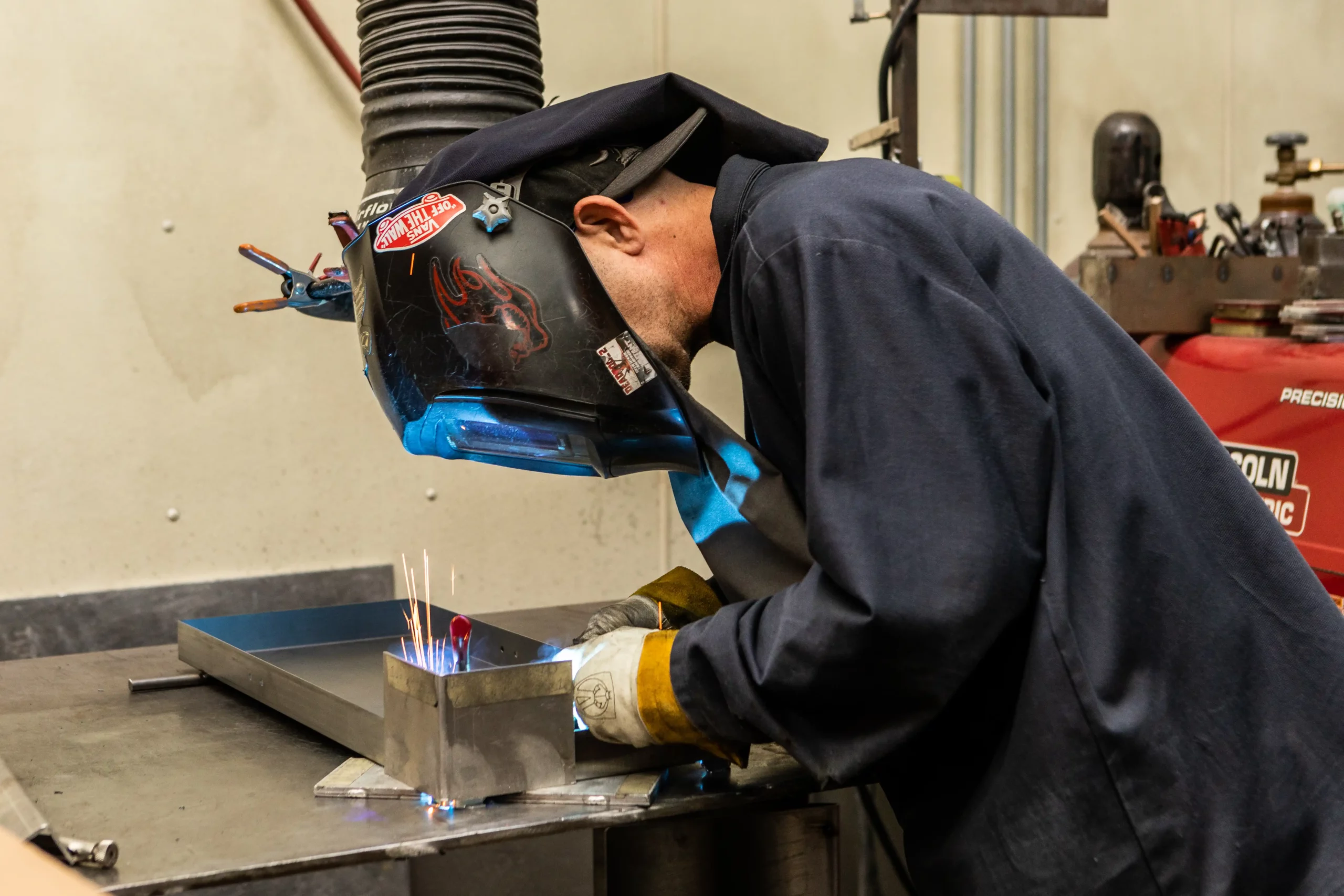Getting Welding Excellence: Unveiling the Tricks of WPS Implementation and Optimization
In the realm of welding, attaining quality is a search that hinges on the precise application and optimization of Welding Treatment Requirements (WPS) By delving right into the vital elements, techniques, difficulties, and best methods connected with WPS, a globe of welding excellence awaits those who are willing to discover its depths.
Significance of WPS in Welding
The Value of Welding Treatment Requirements (WPS) in the welding sector can not be overstated, acting as the foundation for making sure uniformity, top quality, and safety in welding operations. A WPS gives detailed instructions on how welding is to be accomplished, consisting of important variables such as materials, welding processes, joint design, filler metals, interpass and preheat temperatures, welding currents, voltages, traveling rates, and extra. By sticking to a well-defined WPS, welders can preserve uniformity in their job, causing regular weld high quality throughout various projects.

Secret Aspects of WPS
Going over the indispensable components of a welding treatment specification (WPS) is vital for recognizing its role in welding procedures. An extensive WPS consists of several essential components that guide welders in attaining high quality and consistency in their job. One vital aspect of a WPS is the welding process requirements, which outlines the particular welding procedures to be utilized, such as gas tungsten arc welding (GTAW) or secured metal arc welding (SMAW) In addition, the WPS includes details on the welding products, such as the kind and requirements of the base metal and filler metal to be utilized. The WPS also defines important variables like welding criteria, interpass and preheat temperature level requirements, and post-weld warm treatment procedures. Additionally, it consists of details on joint layout, fit-up, and any kind of special techniques or precautions required for the welding procedure. By incorporating these crucial elements into the WPS, welding treatments can be standardized, making sure top quality, performance, and safety and security in welding procedures.
Strategies for WPS Optimization

Second of all, training and qualification of welding workers according to the certain needs of the WPS is critical. Supplying thorough training programs and ensuring that welders are certified to perform treatments laid out in the WPS can lead to his response better welds and lowered rework.
Additionally, leveraging innovation such as welding software program and surveillance systems can aid in optimizing WPS. These tools can aid in tracking variables, ensuring specifications are within defined restrictions, and supplying real-time responses to welders, allowing them to make immediate changes for boosted weld top quality.
Usual Challenges and Solutions
Facing obstacles in carrying out the strategies for WPS optimization can impede welding operations' efficiency and top quality. One usual obstacle is poor training or understanding of the welding treatment specs (WPS) among the welding team. This can result in improper execution of welds, resulting in issues and revamp. visit this page To resolve this, detailed training programs must be executed to guarantee that all welders excel in applying and interpreting WPS accurately.
An additional difficulty is the lack of correct documents and record-keeping, which is necessary for WPS optimization. Without clear records of welding criteria, products used, and inspection outcomes, it becomes tough to determine areas for improvement and make certain uniformity in welding procedures. Executing a durable paperwork system, such as digital welding administration software, can aid enhance record-keeping and help with information analysis for continual improvement.
In addition, inconsistent welding tools calibration and maintenance can pose a considerable challenge to WPS optimization. Routine equipment checks, calibration, and maintenance routines should be followed purely to ensure that welding parameters are precisely controlled and preserved within the defined tolerances (welding WPS). By resolving these common challenges with positive options, welding procedures can improve performance, quality, and general welding excellence
Finest Practices for WPS Execution
To guarantee effective WPS execution in welding operations, adherence to market standards and careful focus to information are critical. When starting WPS execution, it is essential to start by completely recognizing the details welding needs of the task. This involves a detailed testimonial of the welding procedure requirements, materials to be bonded, and the ecological problems in which the welding will happen.
When the demands are clear, the following step is to choose the appropriate welding treatment that straightens with these requirements. This involves speaking with the appropriate codes and standards, such as those given by the American Welding Culture (AWS) or the International Company for Standardization (ISO), to ensure compliance and top quality.
Furthermore, documenting the whole WPS execution procedure is crucial for traceability and quality assurance. Detailed records should be kept pertaining to welding criteria, product prep work, interpass and preheat temperature levels, welding consumables made use of, and any type of variances from the initial treatment. Routine audits and evaluations of the WPS can assist identify areas for renovation and make certain recurring optimization of the welding procedure.


Final Thought
In conclusion, the application and optimization of Welding Procedure Requirements (WPS) is vital for achieving welding excellence. By recognizing the crucial components of WPS, implementing efficient methods for optimization, addressing typical challenges, and complying with ideal methods, welders can make certain premium welds and risk-free working problems. It is essential for professionals in the welding industry to prioritize the appropriate execution of WPS to enhance general welding performance and accomplish wanted end results.
The Relevance of Welding Treatment Requirements (WPS) in the welding industry can not be overemphasized, offering as the backbone for guaranteeing consistency, quality, and security in welding procedures. A WPS supplies in-depth guidelines on just how welding is to be carried out, including important variables such as materials, welding processes, joint style, filler steels, interpass and preheat temperatures, welding currents, voltages, travel speeds, and more. One important element of a WPS browse around here is the welding process spec, which describes the particular welding processes to be made use of, such as gas tungsten arc welding (GTAW) or secured steel arc welding (SMAW) By integrating these essential elements into the WPS, welding procedures can be standardized, making sure top quality, performance, and safety and security in welding procedures.
It is important for experts in the welding industry to prioritize the proper application of WPS to improve general welding performance and accomplish desired end results.